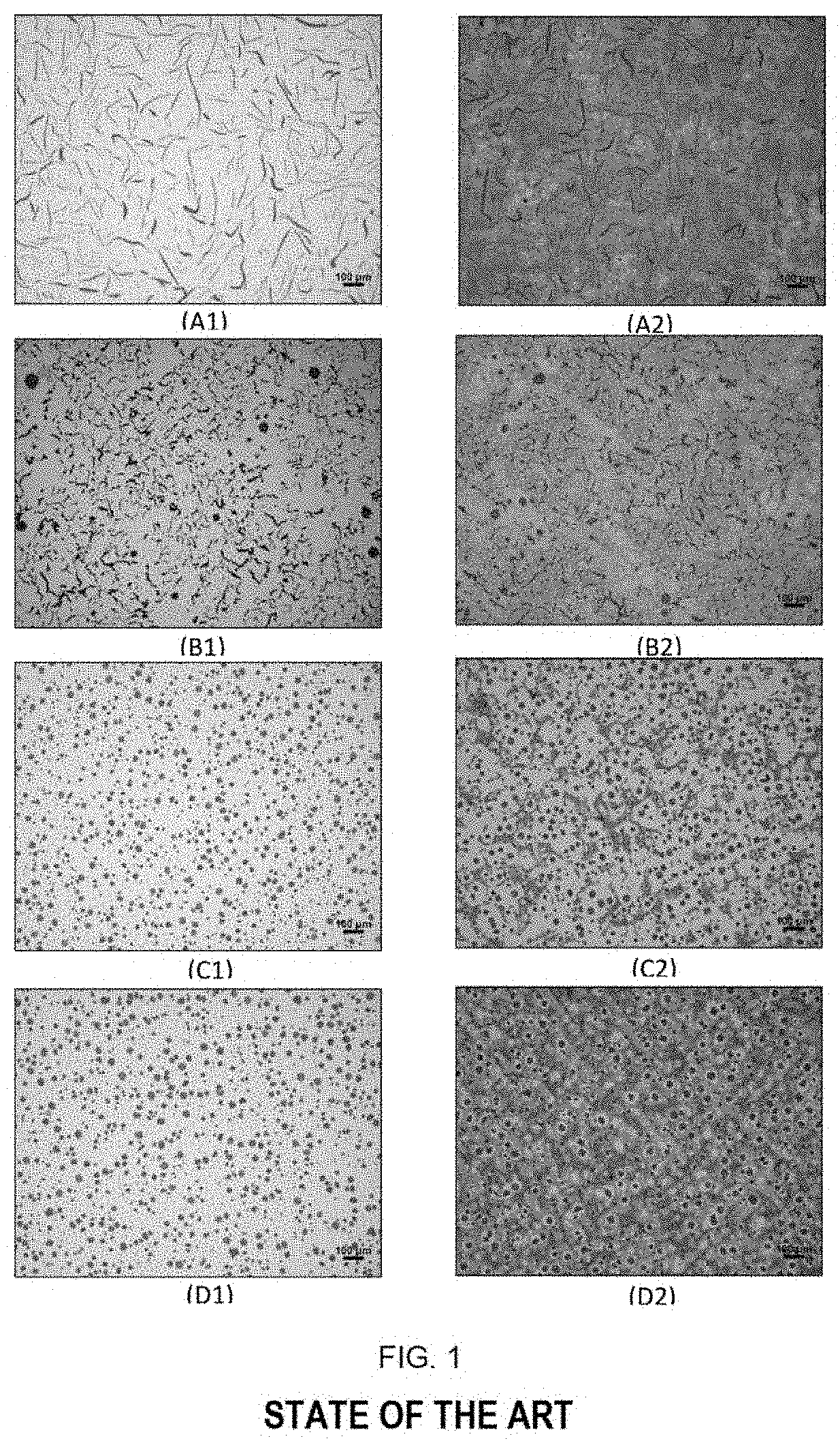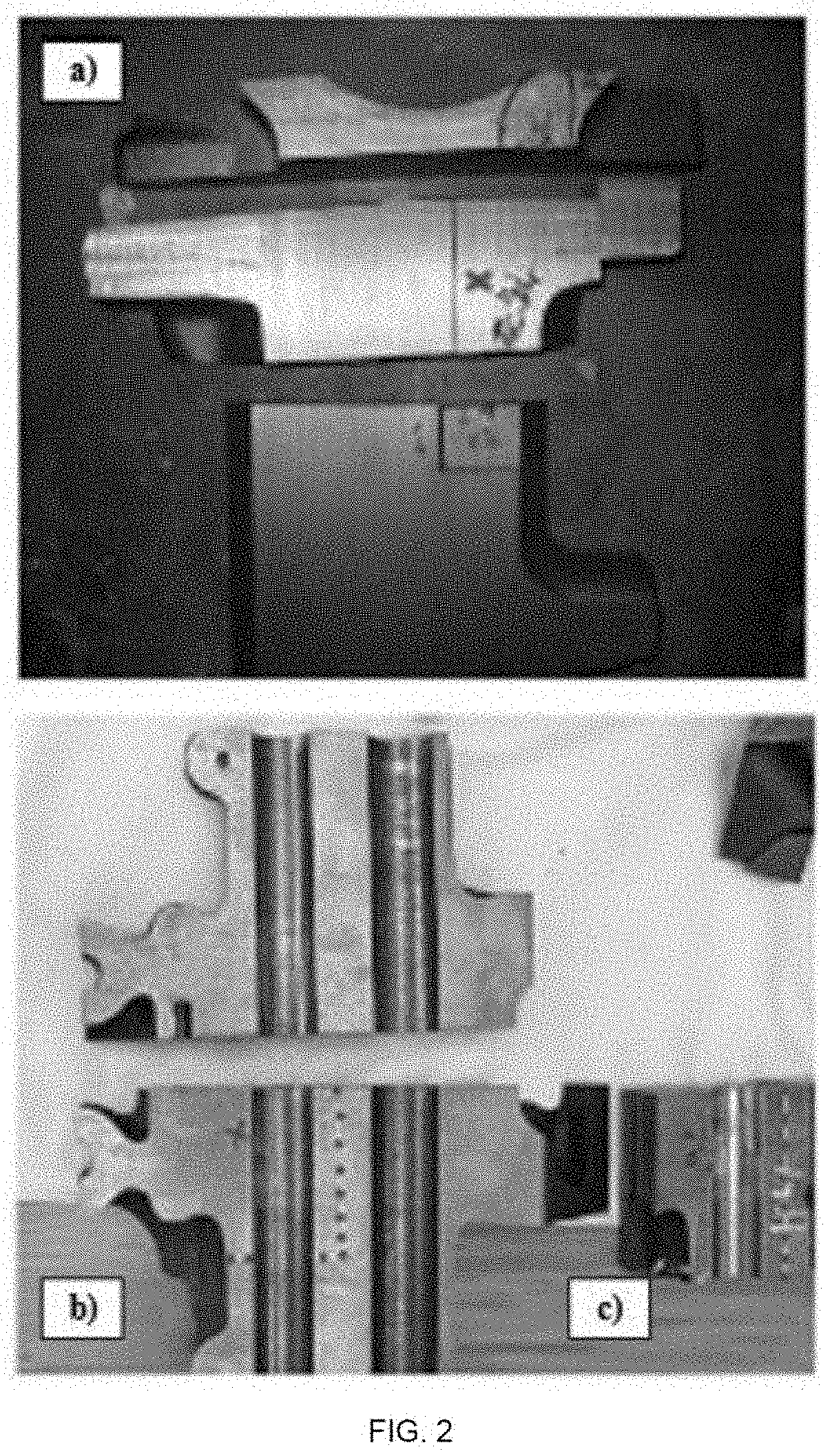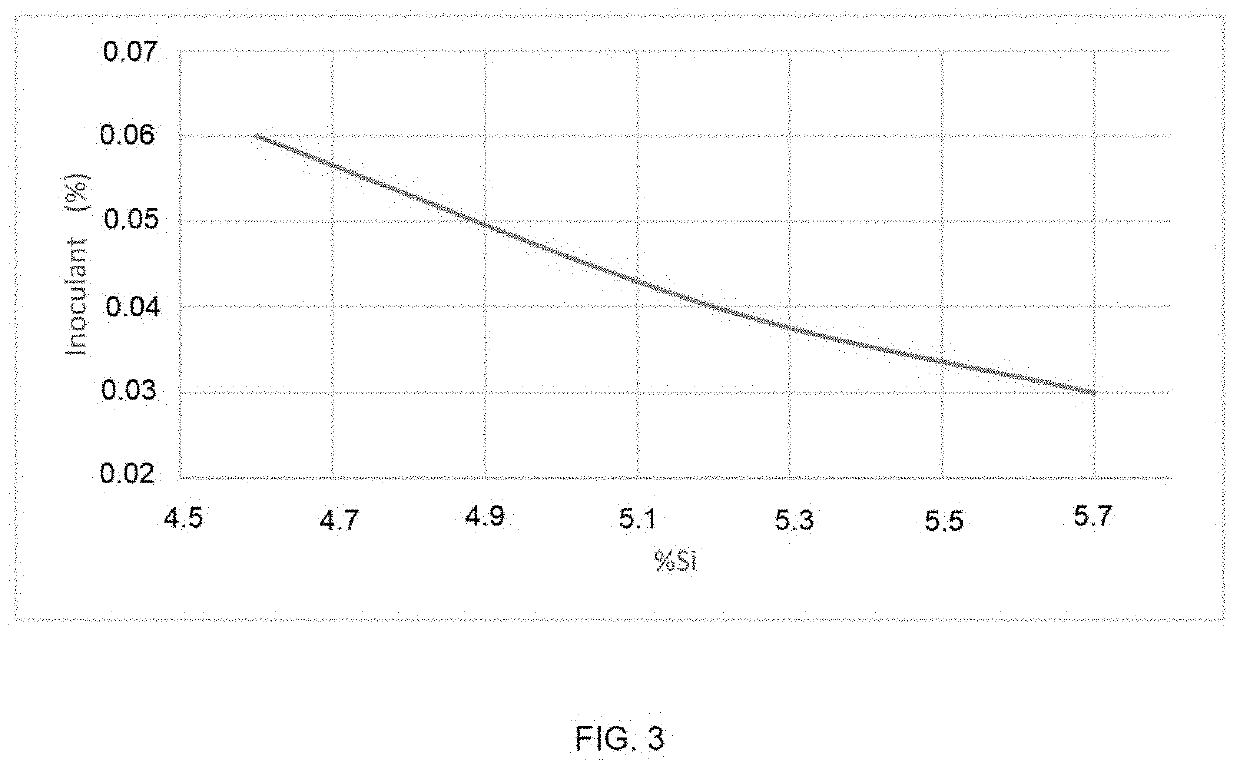Vermicular Cast Iron Alloy, Combustion Engine Block and Head
a technology of vermicular cast iron and combustion engine, which is applied in the direction of machines/engines, mechanical equipment, cylinders, etc., can solve the problems of high level of alloying elements, impairing both the machinability and the application of materials, and the inability of the industry to produce this alloy
- Summary
- Abstract
- Description
- Claims
- Application Information
AI Technical Summary
Benefits of technology
Problems solved by technology
Method used
Image
Examples
Embodiment Construction
[0044]The present invention relates to vermicular cast iron alloy, especially defined by having a microstructure with a ferritic matrix comprising at least 90% ferrite and at least 70% vermicular graphite, said alloy comprising silicon in the range of 4.80% to 5,70% and wherein the Ferritization Factor is calculated as F.F.=% Si−% Cu−10×% Sn−1.2×% Mn−0.5×% Mn is between 3.88 to 5.48.
[0045]The proposal of the present patent arises to produce a vermicular cast iron with a ferritic matrix with high Si content and a maximum nodularity of 30% for the manufacture of engine blocks and heads, which tensile strength limit is greater than 500 MPa.
[0046]The feasibility of producing vermicular cast iron with a strength limit greater than 500 MPa and good machinability creates new opportunities for the automotive sector. The mechanical properties provided by this alloy allow the manufacture of engine blocks and heads with greater geometric complexity and greater power and performance.
[0047]There...
PUM
| Property | Measurement | Unit |
|---|---|---|
| tensile strength | aaaaa | aaaaa |
| elongation | aaaaa | aaaaa |
| tensile strength | aaaaa | aaaaa |
Abstract
Description
Claims
Application Information
 Login to View More
Login to View More - R&D
- Intellectual Property
- Life Sciences
- Materials
- Tech Scout
- Unparalleled Data Quality
- Higher Quality Content
- 60% Fewer Hallucinations
Browse by: Latest US Patents, China's latest patents, Technical Efficacy Thesaurus, Application Domain, Technology Topic, Popular Technical Reports.
© 2025 PatSnap. All rights reserved.Legal|Privacy policy|Modern Slavery Act Transparency Statement|Sitemap|About US| Contact US: help@patsnap.com



